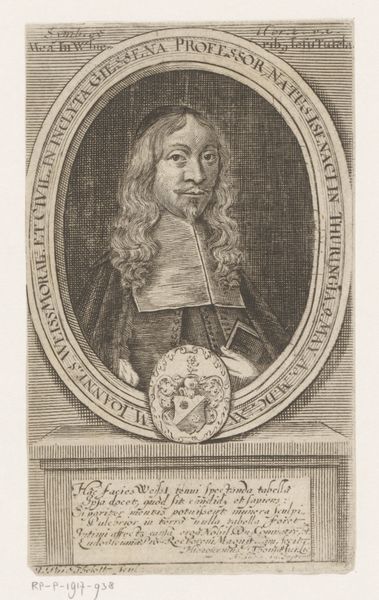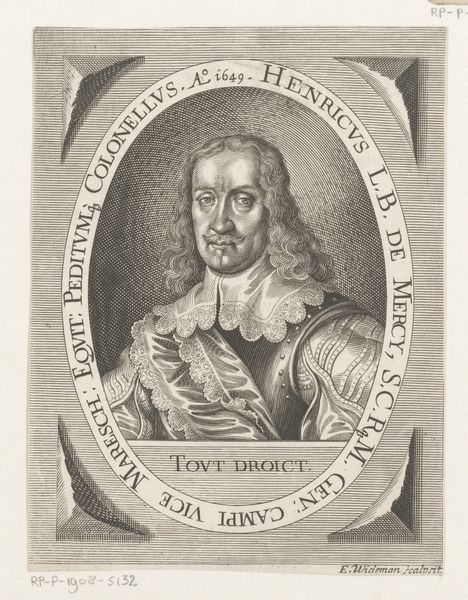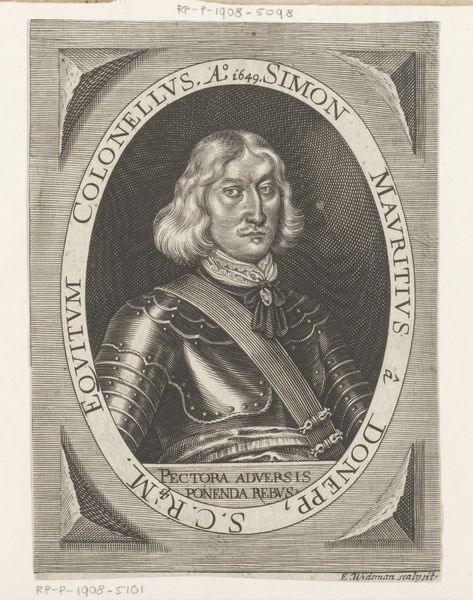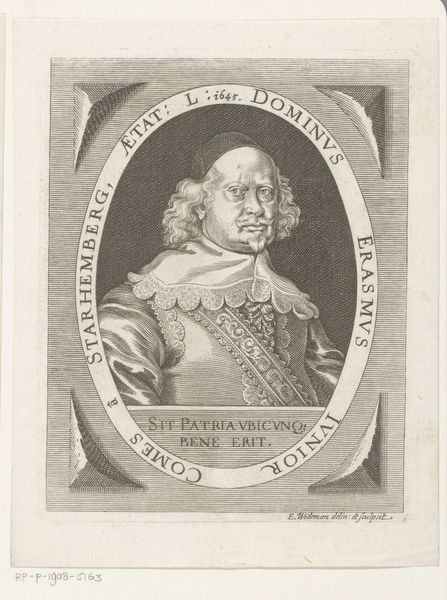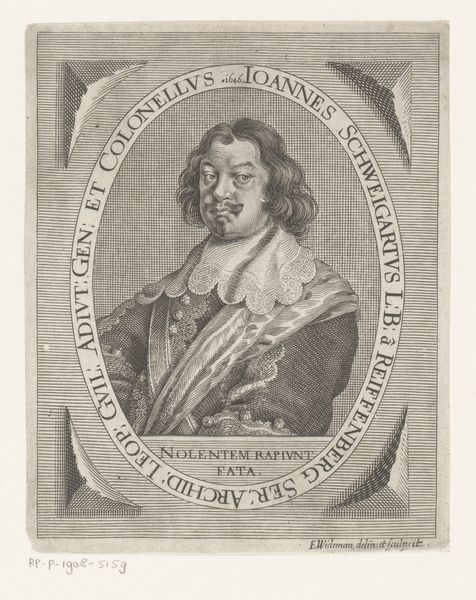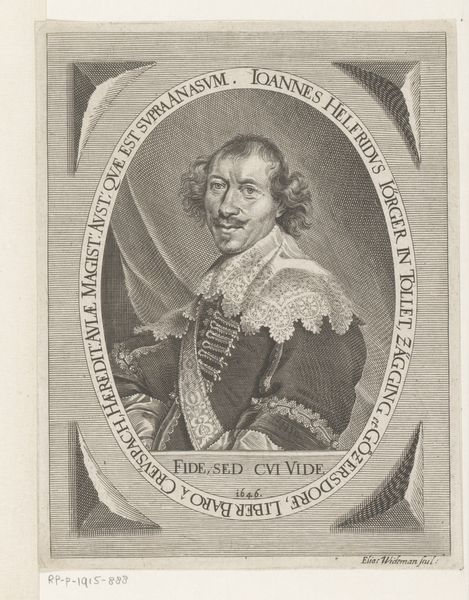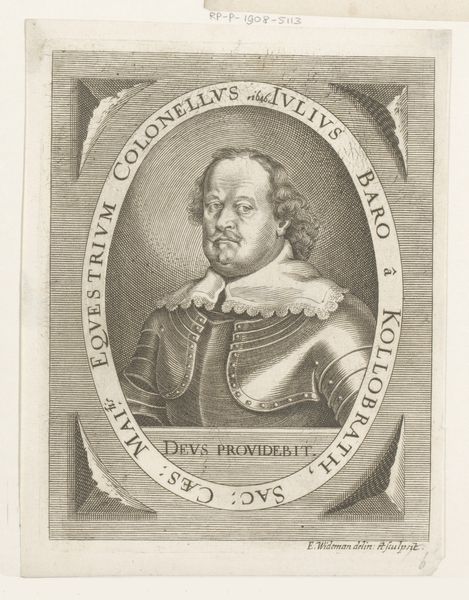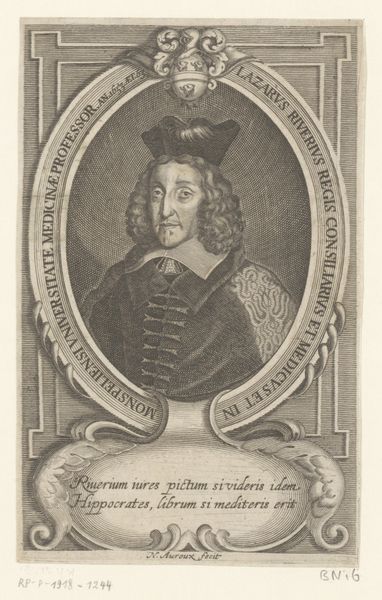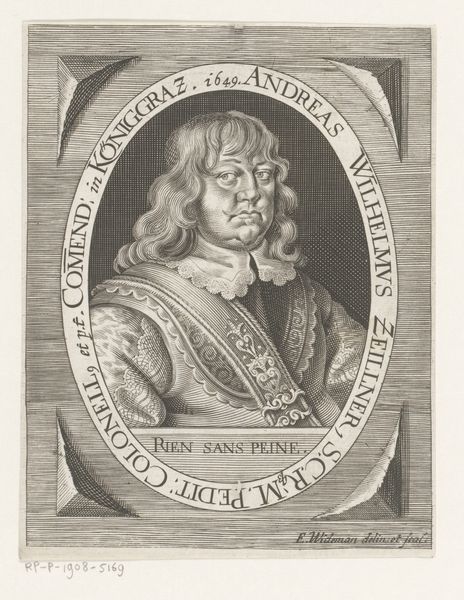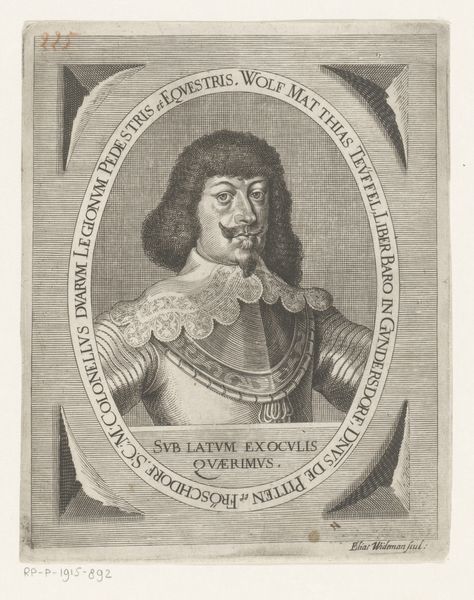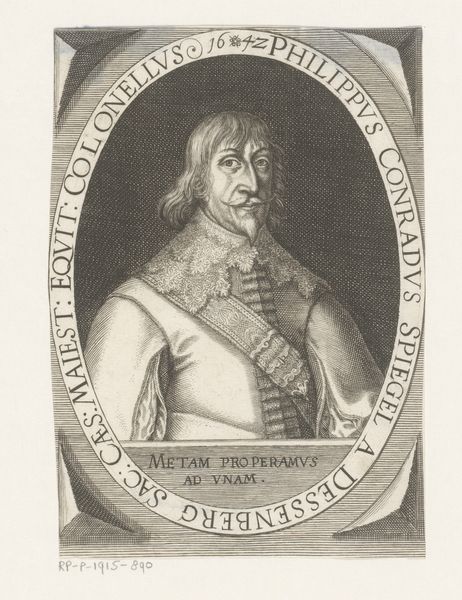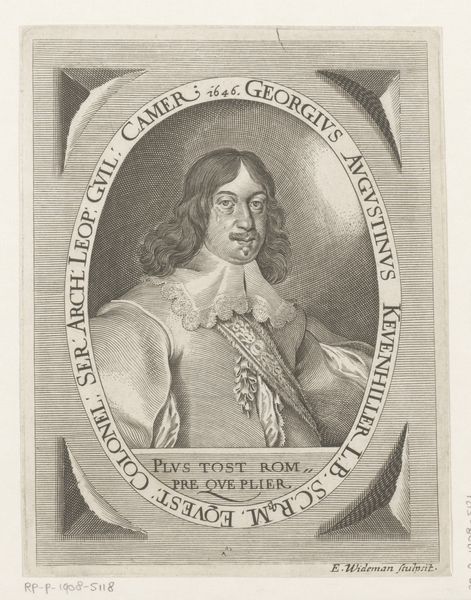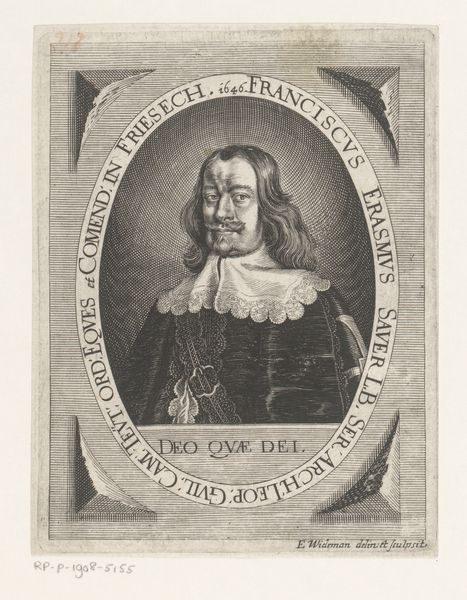
print, engraving
#
portrait
#
baroque
# print
#
old engraving style
#
engraving
Dimensions: height 147 mm, width 116 mm
Copyright: Rijks Museum: Open Domain
Curator: Looking at this engraving, "Portret van Johann Christoph von Rüebland" from 1646 by Elias Widemann, the man's expression immediately gives me a sense of serious intent, almost as if he’s trying to see straight into my soul! Editor: Absolutely! But I find it quite staged. Think about the moment: here we have a print meant to project power and status within a very hierarchical society. He's literally framed—caught in the crosshairs of class and expectation. Curator: It’s a baroque portrait, alright! I do love the elaborate detail in the lace collar and the shiny armor. The texture that Widemann achieves with just lines is incredible, don't you think? And that frame he's set into is rather bizarre. Editor: Bizarre perhaps, but so very telling. The oval and rectangular design emphasizes the sitter’s place inside systems of authority and perhaps, in some way, it highlights his dependence upon social approval. Look at how the text wraps him in a sort of proclamation. "Colonel Johann Christoph de Rüebland!"—it’s almost theatrical, an early form of propaganda. Curator: Propaganda, you say! I get the public image part, but maybe it's more intimate? Think about it. An engraving, printed multiple times. Family could keep an image, it may hang in city hall. The very act of commissioning speaks to legacy and lineage. He had people that care for him and future relations in mind, perhaps a certain ancestor worship. Editor: Well, yes, the family is always central to maintaining the structure. Aristocrats use ancestral connection and portraiture to reproduce class power across generations. That swagger in his face, the very deliberate choice of costume – it all builds an aura of “deserved” authority. This engraving is one small cog in that historical process, isn't it? And consider who had access to prints like these—what about those erased from these archives? Curator: That’s a crucial point – thinking about who is included, and equally so, who isn't represented. This engraving, now over 350 years old, throws such a distinct spotlight on the structures of its time. It feels special to be thinking on it. Editor: Indeed, an artifact so charged by class and era invites us to consider not just this one man, but to challenge the broader structures of power and memory that surround us now.
Comments
No comments
Be the first to comment and join the conversation on the ultimate creative platform.
